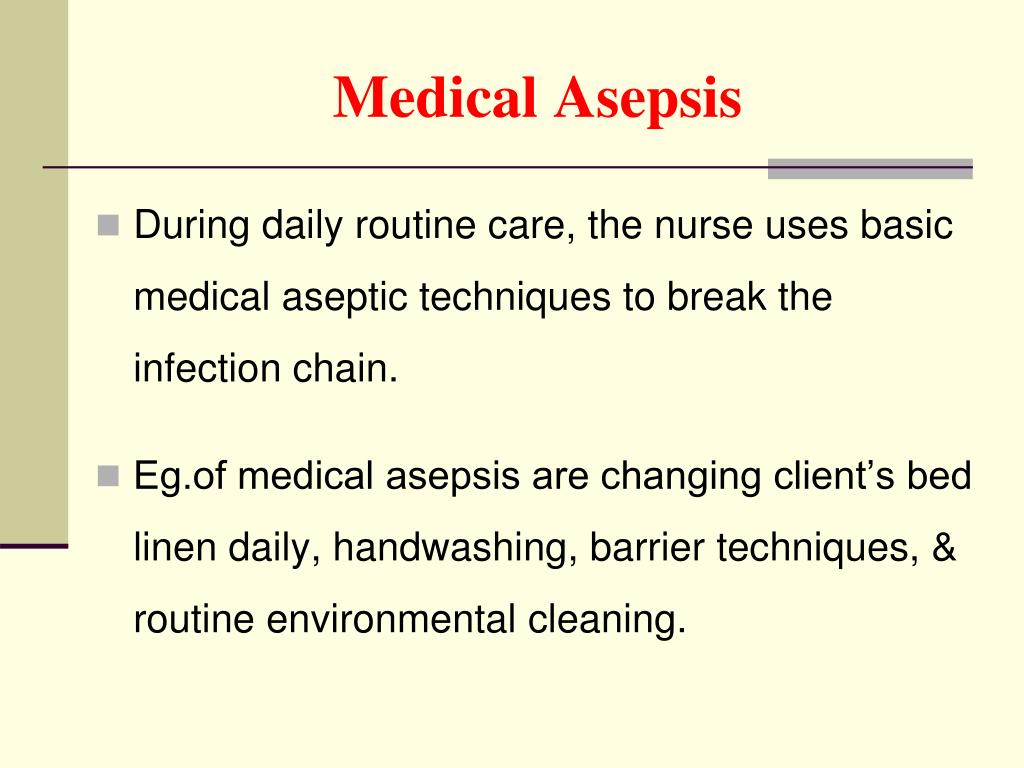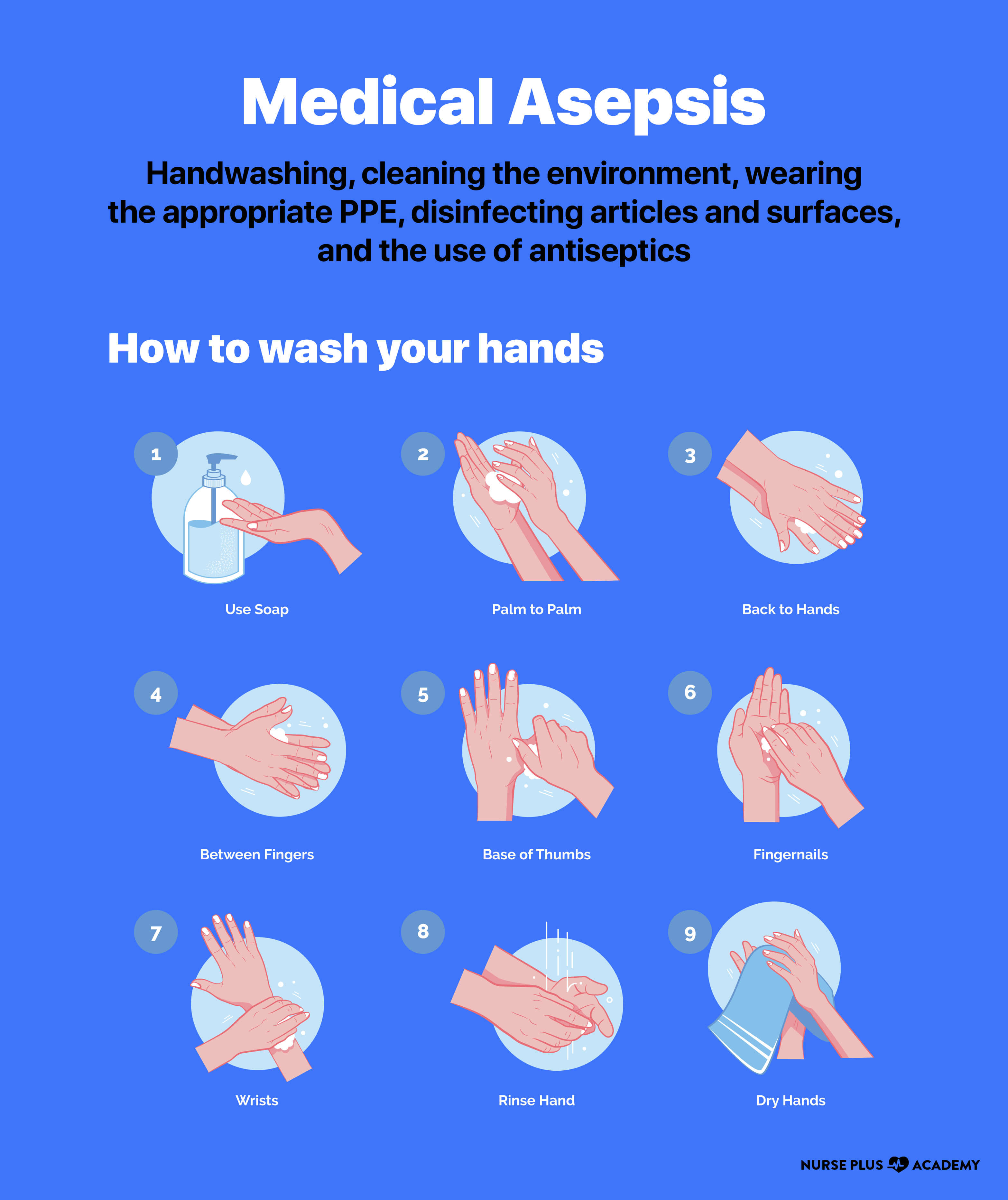
- #DIFFERENCES BETWEEN MEDICAL AND SURGICAL ASEPSIS FULL#
- #DIFFERENCES BETWEEN MEDICAL AND SURGICAL ASEPSIS PROFESSIONAL#
- #DIFFERENCES BETWEEN MEDICAL AND SURGICAL ASEPSIS SERIES#
#DIFFERENCES BETWEEN MEDICAL AND SURGICAL ASEPSIS SERIES#
While sterilization is often a single-step process, aseptic technique is a complicated series of events. It’s much more complex than sterilization. Regardless of its application, maintaining asepsis requires a rigorous and detailed approach. The specifics of aseptic technique will vary depending on the environment.

#DIFFERENCES BETWEEN MEDICAL AND SURGICAL ASEPSIS PROFESSIONAL#
Professional piercers also often use autoclaves to sterilize their equipment and jewelry. All three combine in an autoclave, a machine that’s used to kill microbes on medical or scientific instruments. Heat, pressure, and steam are the most common sanitization methods.

The most common ways to achieve sterility include: Sterile technique involves the sanitization of surfaces and implements. It also extends to more resistant bacterial spores.

This includes the standard bacteria, viruses, fungi, and protists. When something is sterile, it’s completely free of any live microscopic organisms. Keep reading for a summary of what you need to know to avoid biocontamination. In this guide, we’ll go over when to use aseptic techniques, when to use sterile techniques, and the differences between each of them. Both work to prevent the spread of disease, but they do so in different ways and aren’t always useful in the same environments. sterile technique.Ĭontrary to popular belief, they aren’t quite identical terms. One of these common points of confusion is the difference between aseptic technique vs.
#DIFFERENCES BETWEEN MEDICAL AND SURGICAL ASEPSIS FULL#
Biological and medical glossaries are full of ambiguous language and similar terminology.


 0 kommentar(er)
0 kommentar(er)
